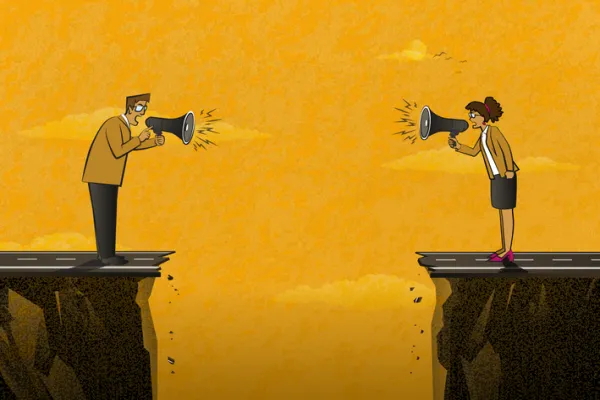The wretched bankers shouldn’t get all the blame for the credit crisis. When left to their own devices, the inmates of the financial zoo are bound to run amok. Equal culpability lies with the zookeepers — the central bankers and regulators — who, instead of guarding their charges, left the gates of Wall Street wide open. Now policymakers want more-robust cages overseen by a “macroprudential regulator.” Yet it’s only a matter of time before clever money monkeys discover how to pick the locks and wreak havoc again.
Before his death in 1996, the economist Hyman Minsky spent a career exposing the fragilities of capitalism. So the gathering of economic mavens at the 18th Annual Hyman Minsky Conference at the Ford Foundation in New York last month provided an appropriate venue to dissect the origins of the crisis and suggest appropriate cures.
“I am convinced,” intoned Henry Kaufman, a former chief economist and vice chairman of Salomon Brothers, “that the misbehavior of some would have been much rarer — and far less damaging to our economy — if the Federal Reserve and, to a lesser extent, other supervisory authorities had measured up to their responsibilities.”
This view was echoed by another distinguished commentator, veteran financial author and journalist Martin Mayer. “The regulators and supervisors have not received nearly as much of the blame as they deserve,” he asserted. “Much of the ruin we see around us is the logical result of the refusal of regulators to exercise the authority they had in the mortgage market, in the leverage of bank holding companies and in dishonest behavior in OTC derivatives creation and trading.”
Why did the authorities let down their guard? They didn’t care to read Minsky’s writings. Had they done so, policymakers might have recognized that periods of economic stability engender behavior that renders the financial system increasingly fragile, to the point that what appears to be a small mishap can trigger a systemic catastrophe.
Instead, Alan Greenspan, Ben Bernanke and the other guardians of the credit system were beholden to a flawed intellectual paradigm. They subscribed to the belief that financial markets tend toward equilibrium and that market participants act with rational expectations. A few years back Greenspan and other Fed officials, including now–Treasury Secretary Timothy Geithner, applauded financial innovations for improving the robustness of the credit system. Yet as Columbia University professor and Nobel Prize–winning economist Joseph Stiglitz observed to the conferees, “Most financial innovation is driven by regulatory and tax arbitrage.”
Stiglitz also criticized mainstream economists who posit an all-knowing “representative agent” — whether banker, fund manager or chief executive — who acts in the interests of his clients and shareholders. The reality is very different: All too often agents follow their own interests. Furthermore, they operate under conditions of uncertainty rather than perfect foresight.
Adam Smith asserted that competition among the providers of goods and services improves the allocation of resources. But during boom times the most-aggressive financiers take market share from the more responsible fiduciaries. A financial Gresham’s law is at work: Reckless lenders and borrowers drive out the prudent. “The invisible hand appears invisible,” quipped Stiglitz, “because it’s not there.” Even Greenspan now admits his error, noting last October that “those of us who looked to the self-interest of lending institutions to protect shareholders’ equity (myself especially) are in a state of shocked disbelief.”
Another failure of the policymakers was their obsession with the control of inflation as the prime aim of monetary policy. Yet price stability is neither a necessary nor a sufficient condition to prevent financial crises. Economist Robert Barbera, a conference speaker and author of The Cost of Capitalism, points out that over the past quarter of a century, numerous crises have occurred at times when inflation was quiescent. The collapse of Japan’s Bubble Economy in the 1990s and the Asian crisis of 1997–’98 are two notable examples. Nevertheless, the Fed under Greenspan and Bernanke remained steadfastly focused on consumer price inflation and refused to consider asset price bubbles or credit growth when formulating monetary policy.
Instead, it claimed that bubbles couldn’t be observed before they popped. And even if one could identify a bubble ex ante, Fed officials maintained, it was less costly to mop up the aftermath than to act preemptively. The ever-mounting fiscal cost of bailing out our beleaguered banks has put paid to that argument. Fed officials are now having second thoughts. In a speech entitled “The Minsky Moment: Lessons for Central Bankers,” the head of the San Francisco Fed, Janet Yellen, acknowledged that the authorities would have to consider responding to asset price bubbles in the future.
The crisis will inevitably shake up the economics establishment. It is to be hoped that Minsky’s teachings will inform any new paradigm. Even if they do, however, that doesn’t mean crises won’t recur. Nearly every conference attendant proposed some measure to patch up the credit system and make it more robust.
Some argued that derivatives should be more tightly regulated and kept off limits to speculators. Others proposed resurrecting the Glass-Steagall Act’s separation of commercial and investment banking. There was also talk of breaking up the financial behemoths of Wall Street, which are now on government life support.
Richard Bookstaber, a former Wall Street derivatives expert, argued that financial products should be made less complex and regulated in a similar fashion to new drugs. Financial innovations that make the system more opaque or increase leverage should be proscribed, he said. Several conference participants advocated making capital requirements for banks procyclical, as put forth by Charles Goodhart, professor emeritus of banking and finance at the London School of Economics. Barbera proposed that interest rate policy should reflect changing attitudes toward risk. Policymakers should raise rates when credit spreads tighten, even if inflation remains low. Some conference speakers applauded the idea of creating a new regulatory body responsible for “macroprudential stability,” a concept endorsed last month by leaders of the Group of 20 nations.
Yet it’s unrealistic to hope that financial crises will be consigned to the history books. According to Alex Pollock of the American Enterprise Institute, every previous banking collapse has led to the introduction of new rules intended to prevent future panics. But as Minsky noted, over time competition in financial markets undermines regulations. Policymakers construct elaborate financial Maginot Lines that will inevitably be circumvented during the next boom.
The current crisis will bring forth much new regulation. We can be certain of one thing, however. At some stage in the future, financial overseers will relax their vigilance and Wall Street will learn how to evade existing rules. And when that happens, a crisis will brew. After the ensuing calamity, another generation will turn belatedly to Minsky’s work for enlightenment.
Edward Chancellor is the author of Devil Take the Hindmost and a senior member of GMO’s asset allocation team.






